In this edition of Sliced, the 3D Printing Industry news digest, we cover the latest business developments, partnerships, and acquisitions in the additive manufacturing sector.
Today’s edition features new materials, partnerships, and business deals, and NIAR’s ATLAS and Advanced Machining laboratories receive AS9100 and ISO 9001 certifications.
Read on for the most recent updates from Carbon, Nexa3D, Essentium, Renishaw, 3D Systems, and more.
New materials Carbon, Nexa3D, Stratasys, Essentium, and more
Diving into new materials, Carbon has introduced new material named LOCTITE 3843 HDT60. The material is a one-part resin that possesses moderate temperature resistance, good impact strength, and is rigid and tough. It is designed for product designers and production engineers who need a quick turnaround time for creating high-accuracy tools, fixtures, jigs, and decorative parts with excellent surface finish. Moreover, this new material can function at room temperature and is a lower-cost, easier-to-use, and faster alternative for prototyping or creating rigid, tough geometries, as it requires no thermal post-processing.

Next up is Nexa3D, the ultrafast polymer 3D printing leader, who has introduced two fresh dental resins and a dental workflow to their lineup. With these additions, Nexa3D’s validated dental resin portfolio now comprises ten resins, including the new ones. These two resins are designed to boost production throughput by as much as 50% and enhance dental 3D printing efficiency. xDENT201 is a high-speed modeling resin that can produce up to 10 flat models in just 20 minutes, making it the quickest in the market. xDENT341 is a high-resolution resin that is perfect for printing removable die models with remarkable precision and dimensional stability. The NexaX Dental Workflow is a new software tool that aims to improve productivity for dental laboratories by streamlining orthodontic and removable die applications.
“We think dental 3D printing applications warrant – and quite frankly deserve – a higher level of throughput and more favorable production economics. This is exactly why our material development team, along with our material partners, continue to push the limits of what is possible when it comes to both print speed and dimensional accuracy of 3D printed models,” said Avi Reichental, Nexa3D Co-founder and Chief Executive Officer. “We couldn’t be more excited to bring these two new dental resins to market because we believe they will have a dramatic impact on the productivity of dental labs as well as deliver better patient outcomes.”
3D printer OEM Stratasys announced the availability of 13 new validated materials that are now available for use with the Fortus 450mc 3D printer. In addition, Stratasys has partnered with a new materials provider, ALM, to offer SAF PA12 powder for use with their H350 3D printer which is powered by SAF technology. Stratasys has also released the OpenAM software for the Fortus 450mc printer, which includes an open material license, allowing users to print with new and untested materials for exploratory purposes.
“There should be no limits on what’s possible with 3D printing,” said Stratasys CEO Dr. Yoav Zeif. “The polymer materials industry is investing in additive manufacturing like they never have before, and we want our world-class customers to be able to take full advantage of those innovations in chemistry as quickly as possible. Our hybrid materials strategy does just that because the world urgently needs to make this shift to additive manufacturing at scale.”
Furthermore, Essentium has introduced Duratem, which it claims is the first thermoplastic material with high-temperature resistance and high impact for 3D printing. This new material is ideal for manufacturing in aerospace, automotive, and railway sectors as it allows for the rapid production of end parts that meet high standards of reliability, repeatability, and performance. According to Essentium, Duratem is comparable in price to other materials while providing five times more impact resistance than PEI 9085. It can withstand temperatures up to 150°C and has passed FAR 25.853 FST testing, indicating resistance to flame, smoke, and toxicity.
Engineered materials company Uniformity Labs has made public the release of UniFuse IN718 Nickel Alloy and its corresponding optimized parameters for L-PBF printing with a 60um layer thickness. The company has created High-Performance Scanning parameters that allow for the printing of UniFuse IN718 with a 60um layer thickness and laser power at 400W, resulting in a 2.2X faster exposure time and superior, more uniform mechanical properties. Competitors’ lower layer thickness scan strategies, which aim for best-in-class mechanical properties, do not offer such throughput improvements, unlike the UniFuse IN718 builds, says the company.

Swedish tooling systems manufacturer Sandvik has announced the official opening of its metal powder online store, Osprey Online. The online platform will provide access to a range of metal powders, including titanium powders, maraging steel, nickel-based superalloys, and various stainless steels. The website is easily accessible from any device, and the powder is available on demand. Initially, Osprey Online will serve the European market, with additional markets expected to be included in the future. The webshop provides a range of standardized alloy powders for Additive Manufacturing.
Emerging partnership news from Renishaw, Arius, IperionX, and Sintratec
Now proceeding with new partnerships, first in the line is British Cycling’s AM partnership with Renishaw. British Cycling has announced the extension of its partnerships with Renishaw and Lotus Engineering for the creation of the bike that will be utilized by the Great Britain Cycling Team (GBCT) track squad during the 2024 Olympic Games. This comes as an expansion of the partnerships that helped the GBCT during the Tokyo Olympics. The collaborations aim to enhance the bike’s design to increase its speed, with Renishaw employing its expertise in Additive Manufacturing to produce lightweight, intricate components that aim to reduce drag and enhance overall speed, while Lotus will contribute its experience in lightweight designs and aerodynamic efficiencies.
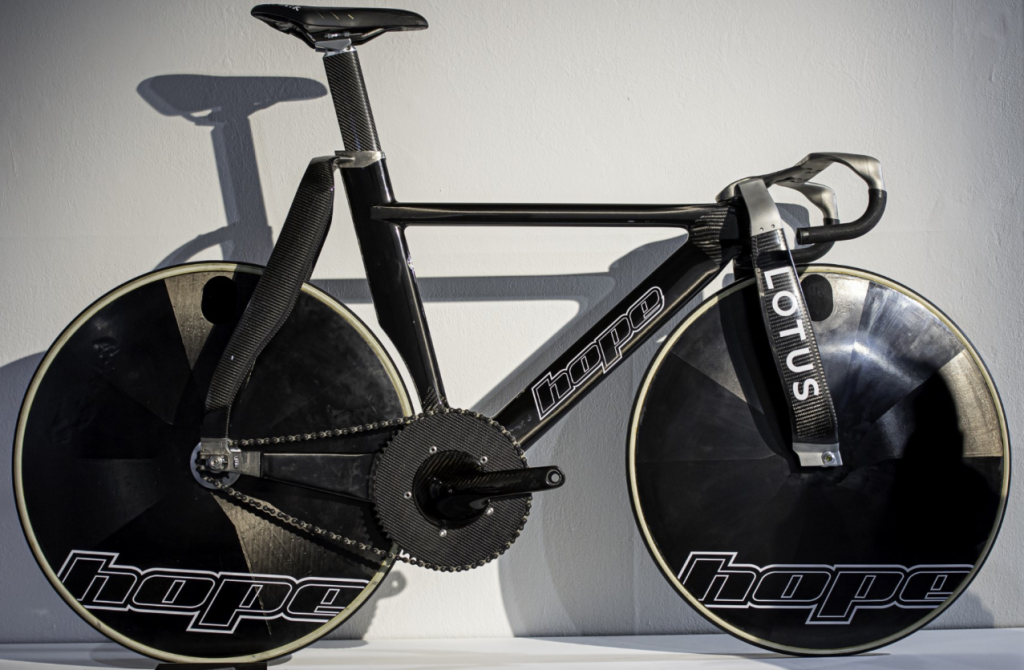
Arius Technology and STALE AMSTERDAM‘s creative studio, alta, has released a series of eight limited-edition monoprints of Salvador Dali’s painting. STALE AMSTERDAM created the original Dali artwork using its dripping technique, and it was scanned using Arius’ ultra-high-resolution 3D color laser data capture. The scan created an Art Digital Master File (ADMF) which was then used to digitally manipulate the original artwork and create 12 original editions. Finally, the artwork was 3D printed using Canon’s elevated printing technology, the Elegraph printing process.
The limited-edition monoprints, each with unique colorways, differentiated by the background, eyes, and several layers of all-over accents, will be available in two drops of four prints, followed by a future drop of the remaining four. Roland dela Cuesta, VP of Engineering & Image Production at Arius said, “The technology opens up new possibilities for artists such as STALE AMSTERDAM, who have complex techniques which means they are limited by the number of works they can create in any given period. It’s also an exciting proposition commercially for artists as it creates a new revenue stream by creating work at another price point.”
Titanium alloy producer IperionX and Canyon Bicycles are collaborating to create a more sustainable titanium supply chain for the bicycle industry. This is being done by producing bicycle components with IperionX’s 100% recycled and low-carbon titanium. IperionX is using its recycled titanium metal powders to create bicycle parts, including frames, via additive manufacturing techniques. The company is working with Canyon’s ESG and product development teams to prototype these components. The initial agreement between the parties is until June 30, 2025. Upon successful completion of the prototype, Canyon, and IperionX plan to negotiate a deal for large-scale production.
Swiss manufacturer of selective laser sintering (SLS) solutions, Sintratec, has announced a new partnership with the Italian company Elmec 3D, further expanding its distribution network in the Mediterranean region. This collaboration will make Elmec 3D the second representative of Sintratec technology in Italy.
This partnership will provide Italian customers with access to Sintratec’s cutting-edge SLS technology, which is renowned for its ability to produce high-quality and durable parts for a range of applications. By expanding its distribution network in the Mediterranean region, Sintratec aims to provide its customers with better service and support, while also enhancing its presence in the 3D printing market.
Additionally, Sintratec and Maquinser have formed a new partnership, with Maquinser becoming the first provider of modular SLS solutions in the Iberian Peninsula. The collaboration will expand Sintratec’s distribution and service network in the Mediterranean region. Maquinser will add the Sintratec All-Material Platform (AMP) to its product range, a modular 3D printing system that revolutionizes the field of selective laser sintering (SLS) by offering unparalleled material diversity, flexibility, and scalability. This partnership will provide Sintratec with valuable expansion in the Southern European distribution and service network and a foothold in the emerging Iberian market.
Australian metal 3D printing specialist AML3D has partnered with Phillips Corporation to sell its ARCEMY systems to the US Federal Government. Phillips is a manufacturing reseller for the government and will focus on selling AML3D’s ARCEMY systems to various departments of the US government, such as the Navy, Airforce, and Army. The agreement between AML3D and Phillips will be for 18 months and can be renewed after that period. Phillips will earn a margin on the difference between the wholesale price supplied by AML3D and the sale price to the end customer, without charging any distribution fee. All other terms of the agreement are standard.
6K Additive and Cumberland Additive (CAI), an additive manufacturing firm, have entered a partnership agreement. The partnership involves a long-term arrangement (LTA) where 6K Additive will provide Ni718 powder to CAI. Additionally, the LTA specifies the possibility of providing an increased quantity of nickel powder and other alloys to meet CAI’s growing production demands.
“Our customer base continues to expand, and we need to ensure not only the quality of the powder but also a reliable supply chain that we can be 100% confident we can meet our manufacturing demand,” said Tim Blaisdell, Chief Strategy Officer for CAI. “We’ve worked with the team at 6K Additive over the past 12 months and they have consistently proven to be a reliable partner. Key to our military and defense customer requirements, 6K Additive is a domestic supplier offering sustainably sourced feedstock making this the ideal partnership.”
Kavian platform manufacturer Sakuu Corporation announced promising results from its ongoing testing of novel printable lithium formulation from Livent for use in Sakuu’s 3D printed batteries. Sakuu is collaborating with Livent Corporation under an existing joint development agreement for the use of Livent’s proprietary LIOVIX printable lithium formulation in Sakuu’s battery 3D printing process. The LIOVIX platform includes applications for pre-lithiation and lithium metal anode manufacturing.
“The successful application of the LIOVIX formulation in Sakuu’s next-generation batteries and leading-edge manufacturing process shows what is possible through strong collaboration and a shared commitment to advancing innovation in battery development,” said Paul Graves, Livent’s President and CEO. “We are excited to build on our partnership with Sakuu to deliver on the promise of pioneering technologies which can improve battery safety, performance, manufacturing efficiency, and sustainability.”
Cold Spray 3D printer manufacturer SPEE3D announced that it is collaborating with the British Army to apply its metal cold-spray printing technology for enhancing the army’s unplanned repair abilities. The British Army has agreed to acquire the recently launched XSPEE3D printer and signed a two-year agreement to partner with SPEE3D professionals. The partnership will involve training sessions, where SPEE3D experts will work alongside the British Army’s Royal Electrical and Mechanical Engineers.
“The British Army chose to work with SPEE3D based on their successful track record of partnering with defense forces worldwide to provide the latest additive manufacturing solutions,” said the British Army’s Lieutenant Colonel Davidson Reith. “We are proud to be a forward-thinking organization and are always exploring the latest technologies to solve the military’s most pressing supply chain issues, which SPEE3D’s technology helps us to solve.”
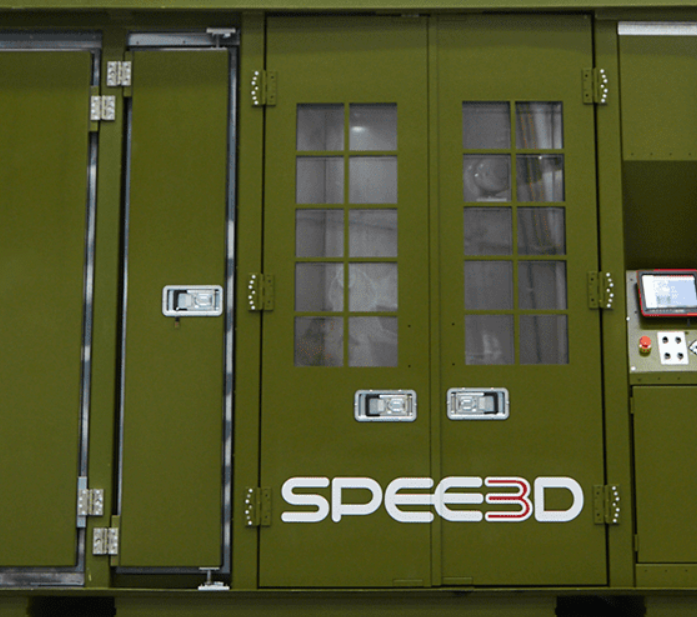
Business expansions from 3D Systems, Ultimaker, SPEED3D, Formlabs, and more
Followed by business expansions, 3D Systems has chosen 6K Additive as its preferred provider of tungsten powder for its DMP metal 3D printing solutions. 6K Additive uses the innovative UniMelt microwave plasma process to manufacture refractory metal powders.

Frank Roberts, president of 6K Additive said, “3D Systems has a proven, high-quality solution with their line of DMP printers. This agreement provides their customers with a high-quality material that will meet the demanding requirements for tungsten powder where high temperature and high strength properties are needed in applications such as medical, defense, hypersonic, and other rocket parts.”
Desktop 3D printing company UltiMaker revealed that it has rebranded its identity following its merger with MakerBot last year. The updated brand reflects UltiMaker’s aim to promote the adoption of desktop 3D printing solutions and presents a new product framework. The new brand benefits from the merging of the strengths of both companies, to ensure all customers are fully supported, as the company strives to create a premier 3D printing ecosystem that unlocks infinite innovation across various industrial sectors.
“Our new brand reflects the combined strength of the two companies that brought us here. By bringing together the best of both worlds, we are better equipped to deliver on our vision and continue to lead the 3D printing industry and empower more innovators to bring their ideas to life,” says Nadav Goshen, UltiMaker CEO. “Over the last few months, a lot of careful thought has gone into this exciting opportunity to decide on the direction of our brand’s future. Our customers remain at the core of our decisions, and we’re excited to unveil the result of UltiMaker’s brand journey.”
Leading 3D printing company Formlabs has launched the Automation Ecosystem, a new offering that aims to boost productivity levels in 3D printing. The system includes several features such as Form Auto for back-to-back throughput, Fleet Control for advanced fleet management, and the High Volume Resin System for high-capacity printing. By reducing operator labor and idle printer time, the Automation Ecosystem enables users to produce end-use parts, prototypes, and customizable products more efficiently and at a lower cost per part. The Automation Ecosystem promises to enable an expansion from one Form 3+ or Form 3B+ 3D printer to a scalable fleet of 3D printers.
Oerlikon Group subsidiary Oerlikon Balzers has acquired two M1 Basic systems from AM-Solutions to enhance the surface finishing of additively manufactured components in their laboratory in Liechtenstein. The new solution offers better flexibility for the production of prototypes and small series production by delivering high-quality surfaces before and after the coating process, ensuring a reproducible result. One of the benefits of the M1 Basic is that it can be easily integrated into external processes while being compact and independent of a fixed location due to its integrated process water circuit.
“The M1 Basic is a system that offers a wide range of surface treatment options and is also absolutely flexible in use. For example, the work area can be divided into different segments so that different processes can run on the machine at the same time,” said Simon Kresser, Project Engineer for mechanical pre- and post-treatment at Oerlikon. This allows different sample parts to be processed in one step. It is also possible to process components with different abrasives. For example, the surface can first be scrubbed and smoothed during a roughening step with aggressive media, and then finished to a high gloss with fine polishing media.”
printpal.io has become a member of NVIDIA Inception, which supports startups that are transforming industries with innovative technological solutions. printpal.io’s objective is to enhance efficiency and minimize waste in 3D printing through artificial intelligence. By participating in NVIDIA Inception, printpal.io will be able to utilize advanced machine-learning models on a large scale. In addition, the program will enable printpal.io to partner with other AI-driven businesses and leading experts in the field.
“NVIDIA’s cutting-edge technologies allow us to deploy our models faster, at scale, and with the highest performance,” said Peter Lebiedzinski, CEO of printpal.io. “Accelerated computing is going to be key in the future for the machine learning models we have planned.”
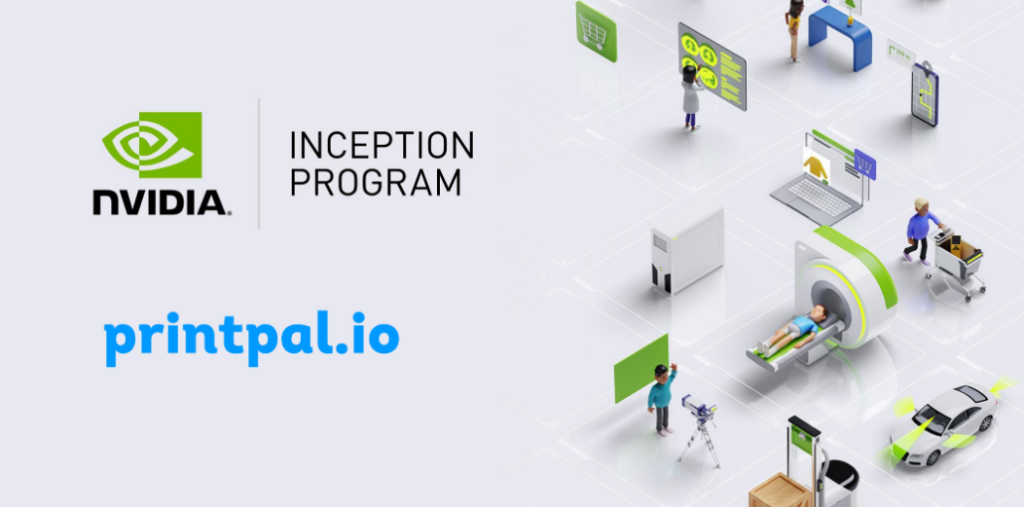
Metal 3D printer manufacturer Velo3D has announced that ADDMAN, an additive manufacturing service provider, has purchased two Sapphire XC 3D printers to meet the increasing demand from its customers in the space, aviation, energy, and defense industries. The newly acquired printers will be installed in ADDMAN’s Castheon facility, which will increase its production capacity for mission-critical parts. Furthermore, the new printers will enable ADDMAN to lower production costs of 3D printed parts and increase its addressable use cases by allowing the printing of parts that are 500% larger in volume than the original Sapphire printer.
Additionally, Keselowski Advanced Manufacturing (KAM) has joined the Velo3D Contract Manufacturer Network and acquired a Sapphire XC printer to expand its additive manufacturing capabilities. This is KAM’s first purchase from Velo3D and it is part of the company’s strategy to use advanced manufacturing capabilities to produce high-quality parts for its customers. The Sapphire XC printer is calibrated to print a nickel-based superalloy that is resistant to oxidation and corrosion at high temperatures, which is commonly used in industries such as aviation, space, defense, and energy. The printer will also allow KAM to print larger parts for its customers.
Chinese 3D printer manufacturer Farsoon Technologies went public on the Shanghai Stock Exchange (SSE) on April 17th after a successful IPO process. The company was established 14 years ago by Dr. Xu Xiaoshu as a laser-based additive manufacturing machine company, driven by his goal of enabling the industrialization of additive manufacturing with open systems. The company reports that this goal has been achieved, with over 800 systems sold since its inception. Farsoon said, “We especially like to give our acknowledgment to all who supported us in this process and helped to make Farsoon a strong global player in the Additive Manufacturing industry.”
Leading international high-tech company Safran has selected SLM Solutions‘ NXG XII 600 to manufacture large, high-quality aluminum parts for current and future generation programs. The new manufacturing system will be integrated into the Safran Additive Manufacturing Campus located in Le Haillan, near Bordeaux, where SLM 500 machines are already in use. The NXG XII 600 is one of the most productive systems on the market, with twelve 1kW laser power, and its acquisition by Safran is a significant milestone for the company. This advanced technology will enable Safran to produce the critical, large-scale aluminum parts required for its operations in the aviation, defense, and space industries.
Renishaw has been selected by Innovative 3D Manufacturing, a prototyping company, to provide metal AM production and rapid prototyping services. Innovative 3D Manufacturing’s facility in Franklin, USA, houses two quad laser Renishaw RenAM 500Q systems and four single laser Renishaw systems to support its operations.
“Innovative 3D Manufacturing was already familiar with other Renishaw products, such as our market-leading metrology products, and were interested to learn about our AM expertise,” said Keith Brady, Regional Sales Manager at Renishaw Inc. “After trying the system and understanding the benefits, as well as seeing the support we offered, they decided to work with us and subsequently invested in multiple Renishaw AM systems.”
Novel applications by Formify, Raise 3D, MARVEL STUDIOS, Renishaw, and more
Moving on to innovative applications, Formify, a custom 3D printed products provider, has launched a Kickstarter campaign for a new gaming mouse that is tailored to fit the individual user’s hand. Customers start by taking a photo of their hand and submitting it.
Formify’s team then uses advanced machine learning algorithms to analyze the hand’s size, shape, contours, finger length, and width to create a bespoke design that fits perfectly. The company uses industrial-grade multi-jet fusion (MJF) 3D printing technology to produce the mouse, ensuring optimal precision and comfort. Formify promises a timely delivery of the finished product, equipped with a PixArt 3395 optical sensor that offers high-precision tracking with a sensitivity of up to 26,000 DPI and 650 IPS tracking speed. The gaming mouse also features programmable thumb buttons, Kailh 8.0 clear switches, USB-C recharging, and a high-grip surface finish.
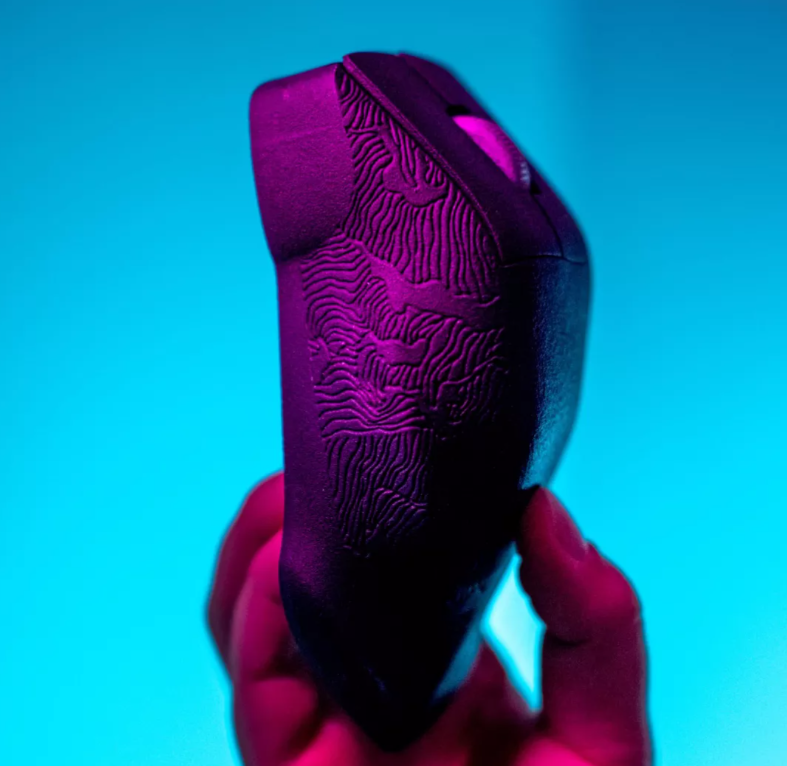
Worcester Polytechnic Institute (WPI) has employed 3DPrinterOS since the makerspace’s inception in 2018, streamlining its 3D printing operations. The makerspace uses the 3DPrinterOS queue to manage all its 3D printers, providing students with a virtual printer to queue their parts.
Students who pay out of pocket pay for their parts before they are released to an actual print queue, which is first-come, first served. For classes and faculty-based projects, payments are automatically deducted from their balances. The makerspace handles a high volume of printing, with approximately 300 to 400 kilograms of filament processed annually. 3DPrinterOS has been instrumental in managing the queue efficiently, enabling the makerspace to maximize printer usage. The makerspace started with 24 3D printers and has since added three more in the past year.
3D printer manufacturer Raise3D has announced the launch of its Hyper FFF technology for the Raise3Pro2 Series printers. The Pro2 Series has been the company’s flagship product since early 2018 and has one of the largest customer bases in the Professional segment worldwide. In November 2022, Raise3D introduced the Hyper FFF technology, which was developed from the Klipper open-source project, to increase FFF 3D printing yield rates while maintaining the quality of printed parts. Raise3D is fulfilling its promise by offering Level one (L1) Hyper FFF to Pro2 Series users for free through a firmware update. Customers are invited to register for the Hyper Speed Open-Test and try out L1 Hyper Speed on their Pro2 Series 3D printer, share their feedback with Raise3D, and start benefiting from Hyper FFF.
Marvel Studios chose the 3D printing technology from WASP to create the laboratory of Riri Williams, the protagonist of the upcoming Disney+ series, Ironheart. Marvel Studios specifically chose two WASP 4070 and one WASP 2040 Industrial Line 3D printers for their advanced technological capabilities, design, and the ability to use recycled plastic materials. These printers were transported to the Marvel Studios team and prominently featured in Riri’s Lab, which is located near MIT in Boston. By utilizing 3D printing technology, the filmmakers were able to produce a visually stunning and realistic laboratory environment that effectively showcases Riri’s inventive and imaginative qualities.
The European Space Agency (ESA) reported that 3D prints created by Orion Additive Manufacturing (Orion AM) will be the first European technology to touch the Moon’s surface. These prints, which are also the first 3D printed parts on the moon, were attached to the wheels of the Rashid rover for the Emirates Lunar Mission’s experiment, called “Material Adhesion and Abrasion Detection”. This test aims to assess the durability of different materials in the harsh lunar environment. The mission was successfully launched on December 1st, 2022, and was expected to reach the lunar surface in April 2023.
Leading 3D printing filtration specialist BOFA has made .STEP files accessible on its website for downloading. These files enable manufacturers and end-users to produce their own connectors for a 3D PrintPRO 2, 3, or 4 extraction unit. BOFA suggests using PLA as the feed material due to its toughness and easy availability. Connector options currently exist for 3D printers equipped with exhaust fans. Before downloading, users must determine the outer dimensions of the fan or fan housing on their 3D printer and choose the appropriate file. Additionally, users can download the .STEP files by accessing the link.
New 3D scanning technologies by Scan Dimension and Beacon
3D scanner developer Scan Dimension has introduced SOL PRO Creator 2.0, a new software exclusively available for the SOL PRO 3D desktop scanner. The update includes a live view of the 3D modeling process, allowing users to intervene at crucial stages, in addition to the software’s familiar user-friendly interface and highly automated approach. As a result, it has made 3D scanning of symmetrical objects with few or no distinct features faster and more precise, which is a well-known challenge.
Beacon has launched a novel 3D printer sensor that helps prevent uneven surfaces from causing printing failures and productivity loss. The Beacon sensor scans the bed surface with sub-micron precision to generate a mesh, which the printer software uses to make micro-adjustments during printing, ensuring an accurate and smooth first layer. This technology eliminates the need for constant monitoring during printing, reduces the risk of filament peeling off the surface or nozzle damage, and is especially beneficial for printing on metal surfaces that can warp under high temperatures. This makes the sensor a valuable tool for industries like aerospace and automotive manufacturing.
Research by Essentium, Boston Consulting Group, and insights by Wohlers Associates
Essentium has shared the findings of its fifth annual independent study, which suggests a promising future for the AM industry. The research, which reflects the views of manufacturing leaders, reveals that 95% of respondents predict a significant rise in the use of AM technology in the next three to five years. Furthermore, 41% of leaders anticipate a dramatic surge.
The study also indicates that manufacturers are particularly concerned with using certified materials that meet or exceed current standards, which is essential in industries such as aerospace, medical, military, and automotive. Almost all (99%) of the manufacturing leaders surveyed agreed that the use of certified materials for large-scale manufacturing is crucial, with 80% considering it “very important” or “critically important.”
According to a study conducted by Boston Consulting Group (BCG) in partnership with RWTH Aachen University and the ACAM Aachen Center for Additive Manufacturing, additive manufacturing has the potential to address the challenges of distributed manufacturing. The study found that additive manufacturing can facilitate the production of small quantities of high-value parts, such as those used in aerospace and medical technology industries, as well as low-volume replacement parts, in a flexible and localized manner. These applications are among the transformative technologies that form the basis of Industry 4.0. Additionally, the report also highlights the limitations of both additive manufacturing and distributed manufacturing, which companies must consider.
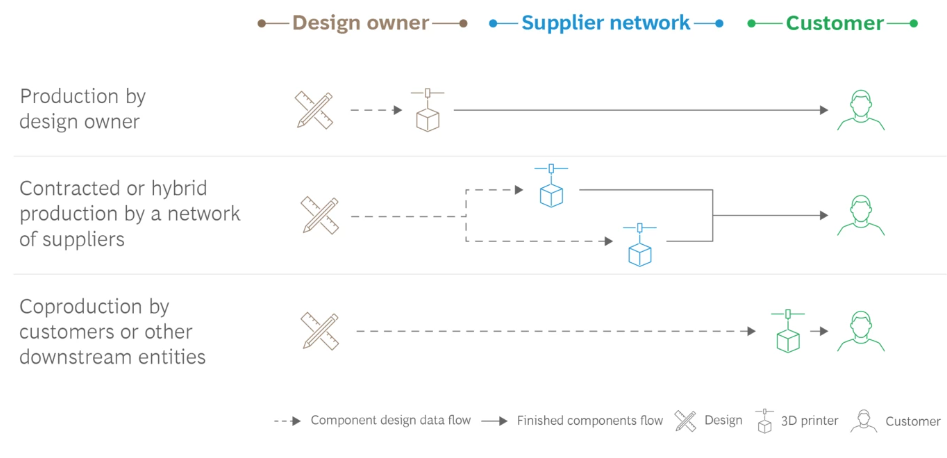
Wohlers Associates, powered by ASTM International, announced the release of Wohlers Report 2023. The Wohlers Report 2023 provides a detailed analysis of the additive manufacturing (AM) industry, featuring perspectives from 10 different sectors. The report delves into various large-format AM applications, particularly in the aerospace and construction industries, and also covers the increasing number of standards and codes related to AM. According to the report, the global AM products and services industry has grown by 18.3% this year, continuing a pattern of double-digit revenue growth in 25 of the last 34 years.
“The AM industry is continuing to expand into end-use production applications,” said Terry Wohlers, head of advisory services and market intelligence at Wohlers Associates, powered by ASTM International. “This trend will grow as standards are further developed and adopted. AM is delivering larger and more critical parts across multiple industry sectors.”
New software by Hyperganic, Mantle, and more
Software company Hyperganic has announced the launch of its new simulation technology that uses a quasi-meshless approach with automated geometry generation and evaluation. This technology is unique and the first of its kind, and is integrated with Hyperganic Core, the company’s Algorithmic Engineering platform. The new physical simulation technology is up to 80% faster than conventional simulation technology. Unlike traditional simulation tools, Hyperganic’s new technology has a built-in framework that allows users to simulate objects within the workflow without having to set parameters. The definition and application of boundary conditions are automated and driven by computer code. This approach allows users to instantly evaluate and test Algorithmically Engineered objects, improve them, and reach an optimal design through a process of digital evolution.
Metal 3D printer manufacturer Mantle has launched its High-Precision Shaping package. The package consists of automated tool pathing software and 0.006″ and 0.010″ ball mill cutting tools, allowing tool rooms to automate their toolmaking process. This technology enables the production of sharp corners and edges without needing to use EDM operations. By eliminating the need for EDM and other toolmaking processes, Mantle can help tool rooms reduce the time required to produce mold tools by up to 75%.
“At Mantle, our goal is to help tool rooms increase the number of complex mold tools they produce while reducing the time, cost, and labor to produce them,” commented Ted Sorom, Mantle CEO and co-founder. “By deploying our new High-Precision Shaping capabilities, our customers can produce steel tools faster than ever – without requiring programming, setup, and operator time from overworked toolmakers.”
CAD Exchanger, a software suite designed for 3D CAD developers and users, has released its latest version, CAD Exchanger 3.18.0. The update includes several significant features, such as compatibility with new format versions of CATIA V5R32, V5R33, and Creo 8, 9. With this update, CAD Exchanger can now import geometry from CATIA V5R32 and V5R33 and can convert it to various CAD formats.
Spanish prime minister visits MELTIO facilities
Spanish President Pedro Sánchez visited the Linares factory in Jaén to observe Meltio‘s revolutionary wire-metal 3D printing technology.
Alongside CEO Angel Llavero and officials from Linares and Jaén, President Sánchez witnessed how the MeltioM450 metal 3D printer creates reliable metal parts using a wire welding laser head, which benefits various industries including automotive, aerospace, mining, oil and gas, and defense. The visit showcased the unique laser 3D printing head integrated with a CNC machine and a robotic arm, increasing productivity and manufacturing autonomy. It highlighted the growing importance of additive manufacturing technology and Spain’s support for innovative manufacturing technologies.
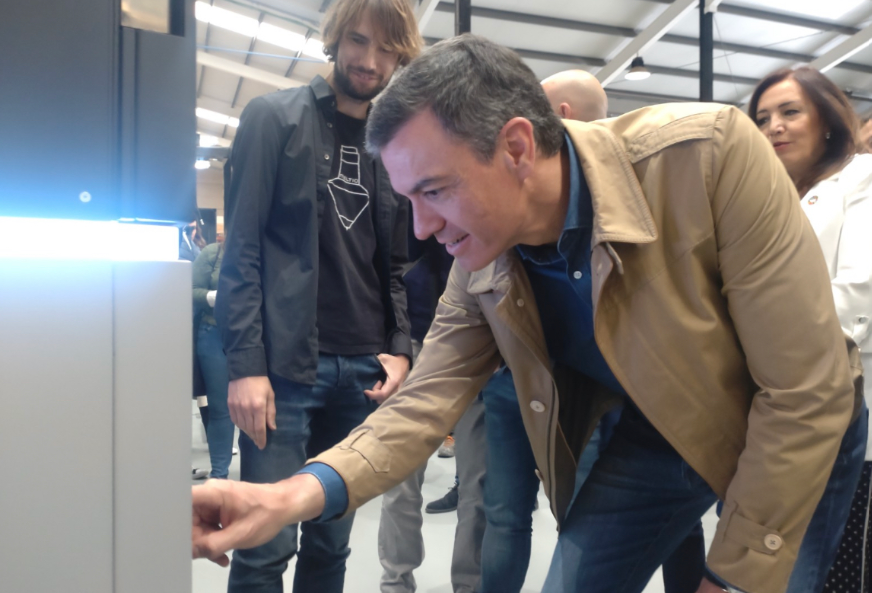
NIAR’s ATLAS and Advanced Machining laboratories receive AS9100 and ISO 9001 certification
The American Systems Registrar, a globally recognized third-party systems registration provider awarded several certifications to the National Institute for Aviation Research (NIAR) at Wichita State University.
These certifications include AS9100 and ISO 9001:2015 for the Advanced Technologies Lab for Aerospace Systems (ATLAS) and the Advanced Machining and Prototyping Lab (AMP). ATLAS received certification for advanced composite manufacturing, machining, autoclave processing, and inspections for industry and defense programs, while AMP was certified for the manufacture of high-precision machined components for aerospace and defense applications.
What does the future of 3D printing for the next ten years hold?
What engineering challenges will need to be tackled in the additive manufacturing sector in the coming decade?
To stay up to date with the latest 3D printing news, don’t forget to subscribe to the 3D Printing Industry newsletter or follow us on Twitter, or like our page on Facebook.
While you’re here, why not subscribe to our Youtube channel? Featuring discussion, debriefs, video shorts, and webinar replays.
Are you looking for a job in the additive manufacturing industry? Visit 3D Printing Jobs for a selection of roles in the industry.
Featured image shows Formify 3D prints customized mouse that is tailored to fit the individual user’s hand. Image via Formify.



